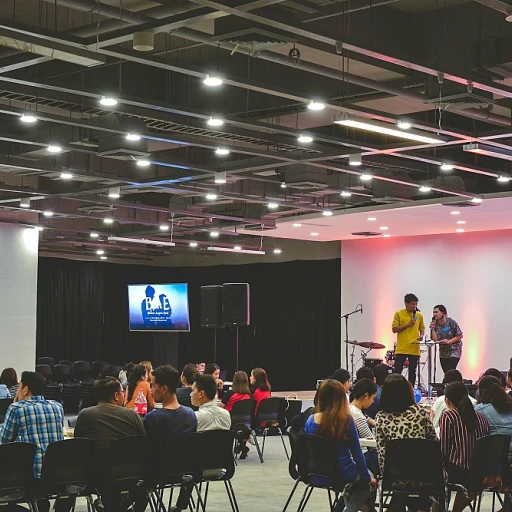Understanding Power Automate for Shift Management
Leveraging Automation for Better Shift Management
Incorporating Power Automate for managing shifts can fundamentally transform how organizations handle shift scheduling and time tracking. By minimizing human intervention in clock-in processes, businesses can boost efficiency and ensure accuracy in tracking time and attendance. Power Automate, a prominent tool from Microsoft Teams, offers organizations the ability to streamline processes and enhance productivity.
To begin with, let's delve into how Power Automate functions. This powerful platform integrates various Microsoft tools to automate repetitive tasks, allowing users to create automated workflows or flows. Within an organizational framework, this can be extremely beneficial for managing scheduling groups, as it simplifies the complexity of shift arrangements and supports the precise listing of shifts.
When employees are ready to start their shifts, an automated system processes their clock-ins, obviating the need for manual interventions. It can process time requests seamlessly, ensuring that each time request is captured in a list format with updated and deleted statuses reflected. This ensures efficiency and accuracy across multiple team environments.
By leveraging Power Automate, businesses can add value by offering features such as swap shifts, where employees can request or offer shifts effortlessly. Such capabilities are especially essential in tight-scheduled industries where minute differences in start times can significantly impact operational flow.
Moreover, utilizing Power Automate ensures that time records are maintained in standardized formats such as UTC and yyyy ddthh, which assists in consistent global time tracking. This feature is critical in creating a synchronized pattern for international teams.
If you're interested in exploring more about how data analytics can be integrated with shift management to unlock potential insights, you might find this resource useful:
Unlocking Insights with Cornell's HR Analytics Program.
Benefits of Automating Shift Clock-In
The Importance of Automating Shift Clock-In Processes
In today's fast-paced work environment, leveraging technology to improve efficiency is crucial. Automating shift clock-in processes with Power Automate can greatly streamline the way shifts are managed across various industries. Microsoft Teams and Power Automate offer a robust mechanism to handle time tracking, ensuring that employees’ time is recorded accurately and efficiently.
Automating the clock-in process not only saves time but also enhances accuracy. Manual tracking often leads to errors that could complicate time management. With an automated system, team members have the ability to clock in and out using their mobile devices, seamlessly integrating with their work schedules and reducing human error. This ensures that start and end times are recorded precisely in the ffzz UTC format.
Employers benefit significantly from implementing these systems as they provide a real-time overview of employee work hours. For instance:
- Enhanced tracking capabilities: Managers can access a list of shifts, see updated or deleted entries, and even track time requests from anywhere. This opens a window of opportunity for better workforce management.
- Improved employee satisfaction: Employees gain flexibility to swap shifts or offer shifts to others in the scheduling group, creating a more flexible and responsive work environment.
- Reduction of administrative burden: Automated systems reduce the need for manual inputs and paperwork, allowing HR teams to focus on strategic planning rather than administrative tasks.
To create an effective system, the use of Power Automate for setting up shifts integrates seamlessly with tools like Microsoft Teams. An automated flow can be created where users are prompted to clock in and out at the start time of their shifts. The system then accurately records this data and updates the shifts list in real-time.
By adopting an automated approach, businesses not only enhance workforce efficiency but also stay competitive in a rapidly evolving digital landscape. Discover more benefits and functionalities of such systems in our
exploration of top HR analytics software designed to enhance workforce management.
Challenges in Implementing Automated Clock-In Systems
Overcoming Barriers in Initiating Clock-In Automation
Implementing automated shift clock-in systems with Power Automate can streamline workforce operations; however, challenges can arise in the process. Companies need to address these potential barriers effectively to achieve better time tracking and improve employees’ shift management.
Firstly, digital literacy across the team may vary. Not every employee is comfortable using technology like Microsoft Teams or Power Automate. Ensuring user-friendly interfaces and providing adequate training can alleviate this issue. When employees become proficient in using tools like shift request and swap shifts within Microsoft Shifts, the transition becomes smoother.
Another common challenge is data integration. Existing systems often contain disparate data strings that need alignment. For instance, the transition from legacy time tracking systems to automated ones can require data migration where formats such as UTC (e.g., yyyy ddthh fffz) are key. Coordinating these shifts, updates, and deleted records demands rigorous planning to maintain data integrity in scheduling groups.
Resistance to change is another obstacle. Employees need assurance about the value added by automation. Highlighting how automating the start time of shifts opens windows for efficiency and fewer errors can help in gaining their support.
There are also technical hurdles involved. Creating a seamless flow that enables time request alongside offers and swaps requires precise configurations in Power Automate. Users must navigate through API-type requests and integrate calendar functionalities to list shifts effectively.
For enterprises venturing into this transition, understanding the impact of culture and technology in your organization is critical. You may find further insights on how organizational culture can affect the implementation of such systems by exploring
the relevant impacts.
In conclusion, tackling these challenges requires a proactive approach, ensuring that both the technology and the people employing it evolve together towards an optimized work show routine.
Real-World Applications and Case Studies
Real-Life Scenarios: Streamlining Shift Management with Automation
Incorporating automated shift clock-in systems as part of a company's HR operations can lead to significantly enhanced efficiency in shift management. With Microsoft Teams integrated into Power Automate, businesses leverage technology to optimize how shifts are managed, scheduled, and supervised. Here’s a closer look at how real-world applications illustrate these benefits:
- Reduced Administrative Burden: Companies have managed to alleviate the excessive administrative workload caused by manual time tracking. By creating automated processes using Microsoft Shifts, monitoring and updating employee shifts become seamless, drastically cutting down human error and redundancy in tracking shifts list.
- Efficient Shift Swap: Organizations using automation have witnessed smoother handling of shift swaps and time requests. Employees can now spontaneously offer shifts and handle shift requests efficiently while adhering to set protocols. Businesses report empowered staff with greater control over their schedules.
- Enhanced Compliance with Workforce Policies: Implementations of such systems ensure consistent adherence to compliance requirements. Businesses maintain accurate records of start times and shift details compliant with labor laws, thanks to Power Automate’s ability to track and manage scheduling group operations.
- Insights and Decision Making: Deploying these automated systems enables companies to gain access to up-to-date employee data. This offers better insights into workforce management practices. Such data proves valuable in adjusting team allocations, adapting to dynamic scheduling needs, and optimizing resource use.
- Case Study Examples: A leading retail firm utilized Power Automate’s capabilities to automate clock-in for over a thousand employees. The integration reduced time spent on manual shift management by over 50%, enhancing efficiency across departments. Another case within the healthcare sector highlighted automation's role in managing employee scheduling demands, cutting administrative time and improving patient care by ensuring appropriate staffing.
The strides taken by different industries underscore the reality that with effective use of Microsoft Shifts and Power Automate, a future forward, cohesive approach to shift management is not only feasible but also sustainable over time.
Technical Steps for Setting Up Power Automate Shifts Clock-In Flow
Steps to Configure Power Automate for Shift Clock-In
Implementing an automated clock-in process using Power Automate can significantly streamline the way your team manages shift schedules. Here’s a step-by-step guide to help you configure this process.
- Set Up Your Scheduling Group in Microsoft Teams
First, ensure that all your employees are part of a dedicated scheduling group within Microsoft Teams. This will be crucial for managing shift requests, offer shift swaps, and maintaining an up-to-date shifts list. The scheduling group helps streamline the overall time tracking and shift management processes.
- Configuring Shifts in Microsoft Teams
Open Microsoft Shifts to create and manage your team's shift schedules. Make sure the shifts are listed with precise start time and end time in the UTC format, enabling accurate time tracking. Each shift type should be categorized to allow employees to easily distinguish between different shifts.
- Create a Flow in Power Automate
Utilize Microsoft Power Automate to create a flow for automating the clock-in process. Start by designing a flow that triggers a clock-in request at the start time of a shift. You can automate messaging within Teams to prompt users when it’s time to clock in, ensuring their shift start is accurately recorded.
- Add Triggers and Actions
In Power Automate, add triggers such as time-based triggers using the time yyyy:ddthh format to ensure events fire off at the correct moments. Combine these with actions that update the user’s clock-in status and log their shift into your tracking list.
- Request Time Off and Shift Swaps
Flows in Power Automate can also handle time requests for unexpected changes. By linking your flow with the employee’s time request, you can automate the approval for shift swaps or time-off requests, all updated in real-time.
- Monitor and Adjust the Flow
Once your flow is active, continuously monitor its performance and make necessary adjustments. Utilizing logs and the Power Automate dashboard can help you understand how frequently the system opens a window for clock-ins or if there are any inefficiencies in the process.
By following these steps, you can create an efficient, automated process that not only saves time but also reduces human error. This enhances the overall efficiency of your workforce's scheduling and time tracking. For more insights into HR data processes and trends, explore
exploring courses in HR data analytics.
Future Trends in Workforce Automation
Future Path for Workforce Automation
The world of workforce automation continues to evolve, with innovations in technology paving the way for more sophisticated tools and solutions. The upcoming trends in this space highlight opportunities for improved shifts management and the seamless integration of automated systems.
One anticipated trend is the increased capability of tools like Microsoft Power Automate, which can further streamline the shift clock-in process. As organizations recognize the value of having real-time data for time tracking and employee scheduling, there is a shift toward adopting automated methods that ensure high accuracy and efficiency.
Furthermore, the integration with Microsoft Teams is expected to enhance collaborative efforts. This integration will allow team members to seamlessly communicate and manage shift requests and updates within a familiar environment. The use of Power Automate for creating a flexible shifts list and managing time requests across a scheduling group becomes crucial and more intuitive when the familiar interface of Teams is utilized.
Leveraging AI and machine learning within the scope of workforce automation could provide enhanced capabilities for predicting staffing needs and optimizing shift allocations. Specific algorithms might analyze past data patterns to recommend the best fit for scheduling, allowing for better resource allocation.
Data privacy and security will remain a top priority, reflecting growing public concern over digital ethics. As the time tracking technologies evolve, storing information in access- and format-controlled methods, like UTC format, will become essential, ensuring the protection of employee data.
Finally, with continuous developments, businesses can anticipate tools that are increasingly user-friendly, reducing the need for extensive training and technical adjustments. For example, enhancements in automation tools may soon allow users to create and modify shifts quickly without having to manually enter complex strings of data or manage type and flow intricacies.
Staying updated with these trends will enable organizations to maintain a competitive advantage in efficient employee tracking and shift operations. By proactively harnessing these new developments, businesses can ensure a smooth transition into future-ready workforce management systems.












